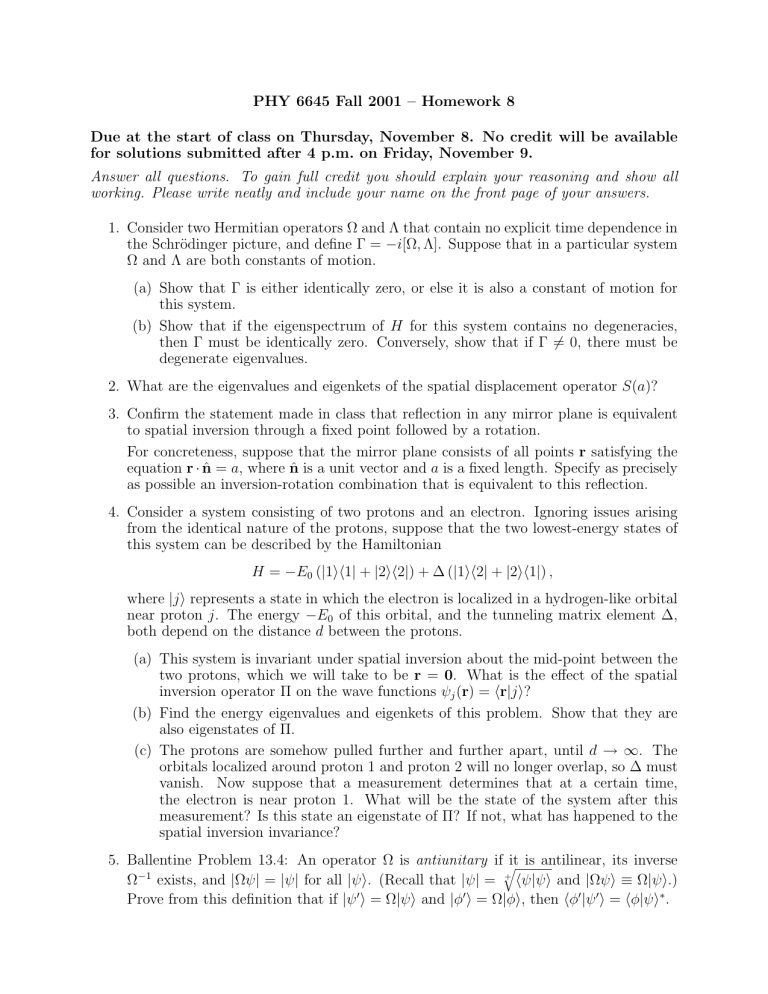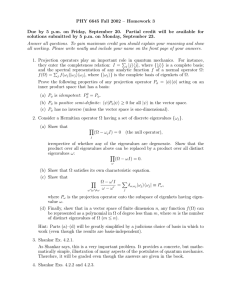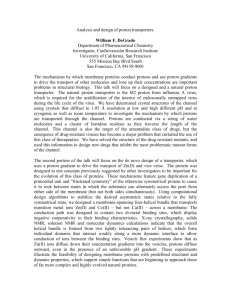PHY 6645 Fall 2001 – Homework 8

PHY 6645 Fall 2001 – Homework 8
Due at the start of class on Thursday, November 8. No credit will be available for solutions submitted after 4 p.m. on Friday, November 9.
Answer all questions. To gain full credit you should explain your reasoning and show all working. Please write neatly and include your name on the front page of your answers.
1. Consider two Hermitian operators Ω and Λ that contain no explicit time dependence in the Schr¨
− i [Ω , Λ]. Suppose that in a particular system
Ω and Λ are both constants of motion.
(a) Show that Γ is either identically zero, or else it is also a constant of motion for this system.
(b) Show that if the eigenspectrum of H for this system contains no degeneracies, then Γ must be identically zero. Conversely, show that if Γ = 0, there must be degenerate eigenvalues.
2. What are the eigenvalues and eigenkets of the spatial displacement operator S ( a )?
3. Confirm the statement made in class that reflection in any mirror plane is equivalent to spatial inversion through a fixed point followed by a rotation.
For concreteness, suppose that the mirror plane consists of all points r satisfying the equation r ·
ˆ = a , where ˆ is a unit vector and a is a fixed length. Specify as precisely as possible an inversion-rotation combination that is equivalent to this reflection.
4. Consider a system consisting of two protons and an electron. Ignoring issues arising from the identical nature of the protons, suppose that the two lowest-energy states of this system can be described by the Hamiltonian
H =
− E
0
(
|
1 ih
1
|
+
|
2 ih
2
|
) + ∆ (
|
1 ih
2
|
+
|
2 ih
1
|
) , where
| j i represents a state in which the electron is localized in a hydrogen-like orbital near proton j . The energy
−
E
0 of this orbital, and the tunneling matrix element ∆, both depend on the distance d between the protons.
(a) This system is invariant under spatial inversion about the mid-point between the two protons, which we will take to be r = 0 . What is the effect of the spatial inversion operator Π on the wave functions ψ j
( r ) = h r | j i
?
(b) Find the energy eigenvalues and eigenkets of this problem. Show that they are also eigenstates of Π.
(c) The protons are somehow pulled further and further apart, until d
→ ∞
. The orbitals localized around proton 1 and proton 2 will no longer overlap, so ∆ must vanish. Now suppose that a measurement determines that at a certain time, the electron is near proton 1. What will be the state of the system after this measurement? Is this state an eigenstate of Π? If not, what has happened to the spatial inversion invariance?
5. Ballentine Problem 13.4: An operator Ω is antiunitary if it is antilinear, its inverse
Ω
− 1 exists, and
|
Ω ψ |
=
| ψ | for all
|
Prove from this definition that if
|
ψ
ψ
0 i i
. (Recall that
= Ω
|
ψ i and
|
φ
0
| ψ |
= + h ψ | ψ i and
|
Ω ψ i ≡
Ω
| ψ i
.) i
= Ω
|
φ i
, then h
φ
0 |
ψ
0 i
= h
φ
|
ψ i ∗
.
6. Suppose that a system has a complete set of stationary state wave functions ψ n
( r )
( n = 0 , 1 , 2 , . . .
), such that Hψ n
( r ) = E n
ψ n
( r ).
Find the eigenvalues and eigenstates of the time-reversal operator T .







